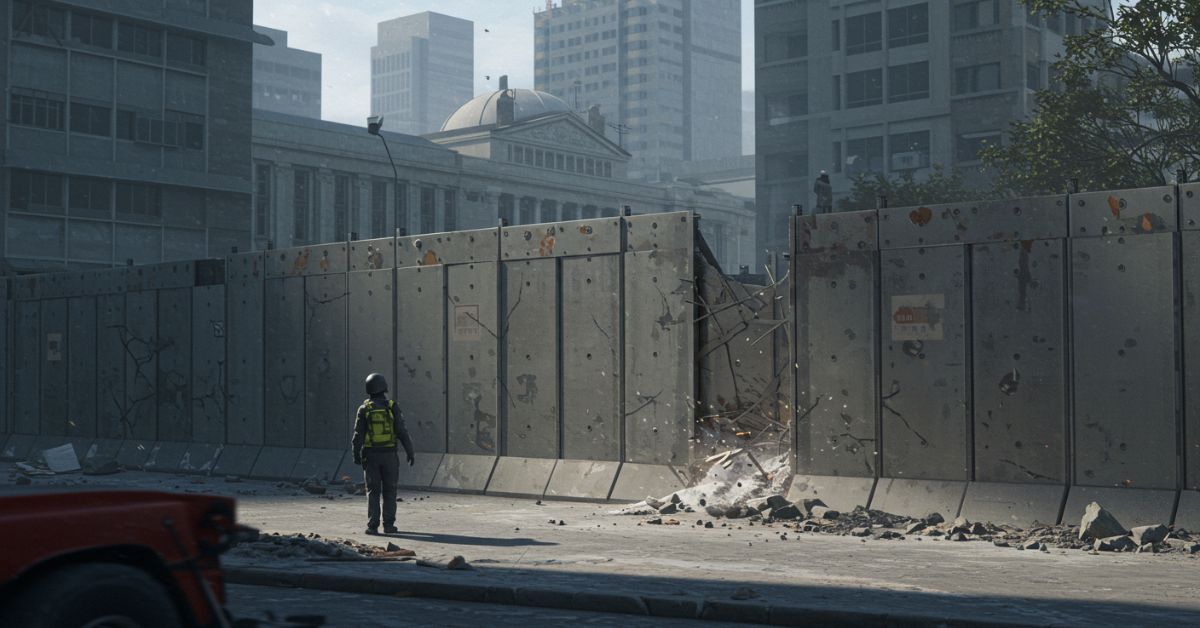When it comes to protecting critical infrastructure, utility companies operate with a profound sense of urgency. Electrical substations, transformers, and other high-voltage components are not just pieces of equipment—they’re the backbone of regional energy distribution systems. The slightest failure can cause cascading blackouts, extensive damage, and even loss of life. In this environment, there is no room for miscalculations or compromises. Companies tasked with delivering uninterrupted power must evaluate every safety protocol down to the last detail. We will explore why blast walls are essential for utility infrastructure and what drives decision-makers to rely on trusted, rigorously engineered systems to prevent disasters before they strike.
Contents
Preventing Catastrophic Chain Reactions in Transformer Yards
Transformer yards are often packed with high-energy equipment positioned close together. While this layout conserves space, it introduces considerable risk: if one unit fails violently—due to internal arcing, insulation breakdown, or a fault-induced explosion—it can ignite a chain reaction across the facility. These types of domino failures are not theoretical; they are real-world occurrences. Real-world incidents have demonstrated how a single transformer fire, if left unchecked, can cause neighboring units to ignite, spreading damage across the substation and leaving entire communities without power for days or even weeks. The cost of recovery is massive—not only in financial terms, but also in public trust and service continuity. To prevent such failures from escalating, transformer blast walls are used to isolate equipment and absorb the impact of explosions, thereby reducing the risk of widespread damage and maintaining operational stability.
To mitigate this risk, blast walls are used to create physical separations between transformers and other critical components. These walls are designed to absorb and redirect the intense energy of a blast, acting as a shield that prevents the spread of fire, flying debris, and shockwaves. Without such barriers, a single transformer failure has the potential to render an entire substation inoperable. Companies that understand the full scope of what’s at stake opt for engineered solutions that can reliably contain worst-case scenarios, turning high-risk areas into controlled zones that can withstand major internal failures without cascading into a full-blown crisis.
Understanding the Demands of Real-World Environments
Utility infrastructure does not exist in a vacuum. Substations and transformer yards are located in diverse environments—from hurricane-prone coastal zones to scorching deserts and frigid mountain regions. Blast protection systems must be able to function flawlessly in all these conditions. It’s not enough to offer theoretical protection based on ideal scenarios. Instead, the systems used must be tested, validated, and proven to withstand environmental stresses as well as explosive forces. Temperature extremes, corrosion potential, wind loads, and seismic activity all factor into the engineering of high-performance blast walls.
Utility companies are keenly aware that infrastructure resilience isn’t measured by average performance but by how systems behave under duress. It’s during the hottest days of summer or the coldest nights of winter—when electricity demand spikes—that equipment failures are most likely to happen. That’s why the physical barriers they install must remain stable and effective across all seasons. A poorly constructed wall that deteriorates in extreme weather is a liability. Companies that value operational integrity invest in products that have undergone rigorous testing and meet national and international safety codes. It’s a matter of ensuring the protective infrastructure is as resilient as the electrical systems it protects.
Balancing Compliance, Risk Management, and Public Safety
Safety in utility infrastructure isn’t just a technical concern—it’s also a regulatory requirement and a public responsibility. Electric utility companies must comply with codes established by entities and local permitting authorities. These regulations often require barriers to be fire-rated, impact-resistant, and tested against certain blast overpressures. Compliance isn’t optional—it’s enforced. However, compliance alone doesn’t guarantee protection. It provides a baseline, not a complete solution. Companies that take safety seriously go beyond the minimum. They seek designs that offer actual risk reduction, not just regulatory box-checking.
The public nature of utility services adds another layer of accountability. Transformer explosions and fires are often caught on camera and widely shared across media channels. When failures occur, the response—or lack thereof—is scrutinized. Company reputations are built not just on service delivery but also on how well risks are anticipated and mitigated. Choosing a blast wall system with a proven performance record becomes a form of risk management. It’s an assurance to regulators, insurers, shareholders, and the public that safety isn’t just a slogan—it’s a strategy embedded into infrastructure decisions.
Proven Solutions That Utility Leaders Trust
When utility companies weigh their options for infrastructure protection, they evaluate performance history, real-world applications, and engineering data. The barriers they choose must have a track record of reliability, supported by certifications and third-party testing. That’s one reason many decision-makers turn to Sinisi Solutions. Their blast wall systems are designed to withstand extreme conditions and are constructed with fire-resistant materials that not only contain blasts but also protect against radiant heat and fire spread. Their approach combines practical design with adaptability, allowing integration into both new builds and retrofitted sites without disrupting ongoing operations.
In a world where energy demands continue to grow and infrastructure risks become more complex, utility companies can’t afford to overlook physical safety systems. The margin for error is shrinking, and the consequences of system failure are growing more severe. That’s why trusted blast wall systems have become a cornerstone in utility planning. They offer peace of mind, continuity of service, and protection for people, equipment, and entire communities. In this high-stakes environment, doing things right the first time is not just good practice—it’s essential for survival.
